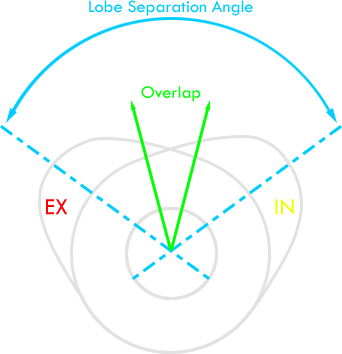The Camshaft: Brain of the Engine
If displacement is the engine's heart, the camshaft is its brain. This precision-engineered component dictates the exact timing, duration, and lift of the valve events. Understanding its specifications—Duration, Overlap, and LSA—is the key to unlocking an engine's true character and performance potential.
Decoding the Cam Card
These core specifications are derived from four key valve timing events.
Duration
The total time, in crankshaft degrees, that a valve is held open. Longer duration allows more airflow at high RPM.
Overlap
The period where both intake and exhaust valves are open simultaneously. It helps scavenge exhaust gases and pull in the new charge.
Lobe Centerlines (ILC / ELC)
The crankshaft angle where maximum lift occurs for each lobe. This defines the timing of peak airflow.
LSA: The Lobe Separation Angle
LSA is the angle in camshaft degrees between the centerlines of the intake and exhaust lobes. It is the single most important factor in determining an engine's personality.
Wide LSA (e.g., 114°-120°)
Results in less overlap. This creates a smoother idle, broader powerband, and higher vacuum, making it ideal for street cars, heavy vehicles, and turbocharged/supercharged applications.
Tight LSA (e.g., 104°-110°)
Increases overlap significantly. This leads to a rough, choppy idle ("lumpy cam") and a narrower, peaky powerband at high RPM. It's perfect for lightweight, naturally aspirated race cars seeking maximum peak horsepower.

